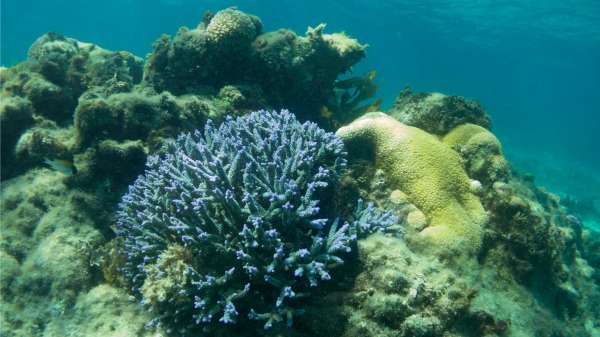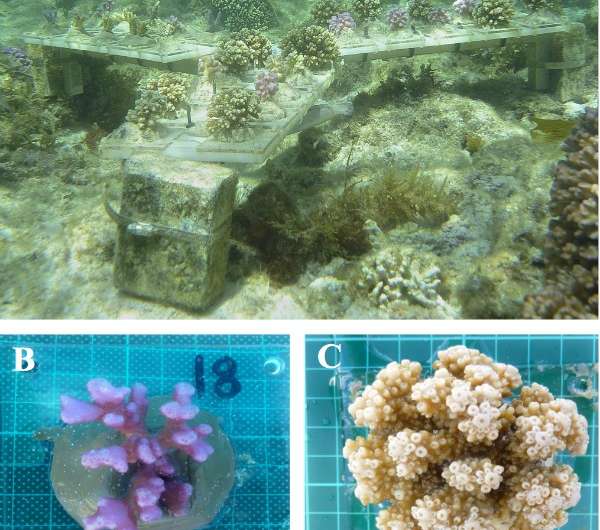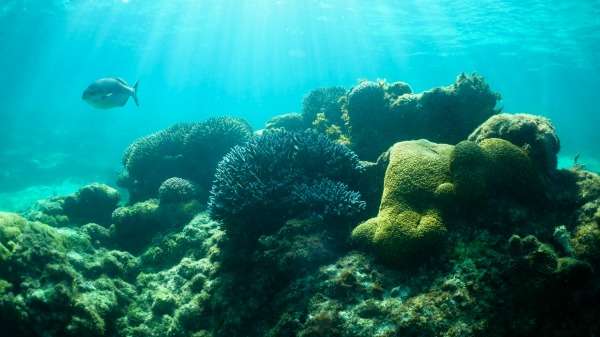Rottnest's tropical corals found to thrive

Researchers are surprised at thriving coral growth at Rottnest Island, predicting its smaller coral communities could grow into a reef similar to the one that existed there in the Last Interglacial, approximately 130,000 years ago.
UWA PhD student Claire Ross's research measured the growth of two hermatypic coral species Acropora yongei and Pocillopora damicornis at Salmon Bay—the southern-most (highest latitude) limit of the species in WA.
She says researchers expected the corals to be slower growing than tropical species because waters are colder, light levels lower and seasonality higher.
"When we saw that they were growing faster than expected in the winter, we were surprised," she says.
"Then we looked at annual average growth rates and found they were growing at similar rates of calcification to tropical corals at Coral Bay and parts of the Pacific and that was even more unexpected.
"It does support the hypothesis that this Rottnest Island habitat could be a type of refuge for low latitude corals especially as ocean temperatures warm up and it becomes even more suitable for tropical species."
Ms Ross says warming water temperatures globally will result in rapid changes to corals environments.
Already some low latitude species are close to their upper thermal limits and as oceans warm further coral calcification rates are expected to decline significantly.

"It is really interesting that most of the locations where tropical corals are expanding their ranges, often have fossilised reefs formed during the Last Interglacial approximately 130,000 years ago, when temperatures were warmer by a degree or two and sea level was two to three metres higher than today's levels," she says.
"We do have a fossilised reef at Rottnest Island just two kilometres from where the modern living coral are growing."
The researchers conducted coral testing at two locations at Salmon Bay over a two-year period.
They collected coral colony fragments from the area and glued them to tiles so that they could track the coral's growth over time.

They also took measurements frequently.
"Every couple of months we tracked changes in the mass of the coral skeletons using the buoyant weight technique to see how fast they were growing," Ms Ross says.
"We also looked at branch elongation—we tagged colonies and measured the changes in length every few months."
"Documenting a baseline for coral growth rates now is important because in 20 or 30 years it will allow us to see how things have changed."
More information: "Perennial growth of hermatypic corals at Rottnest Island, Western Australia (32°S)." PeerJ 3:e781 dx.doi.org/10.7717/peerj.781
Journal information: PeerJ
Provided by Science Network WA





















